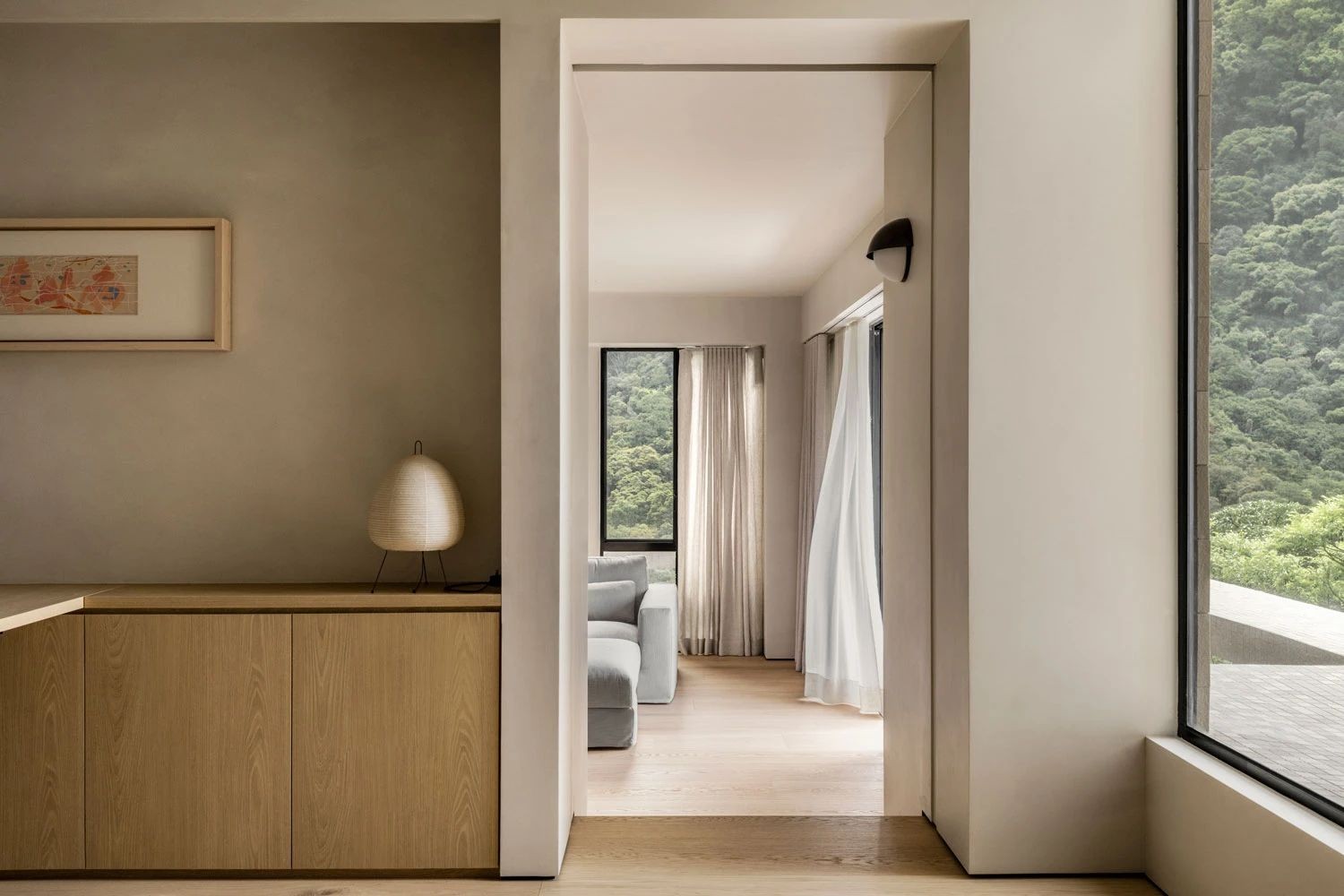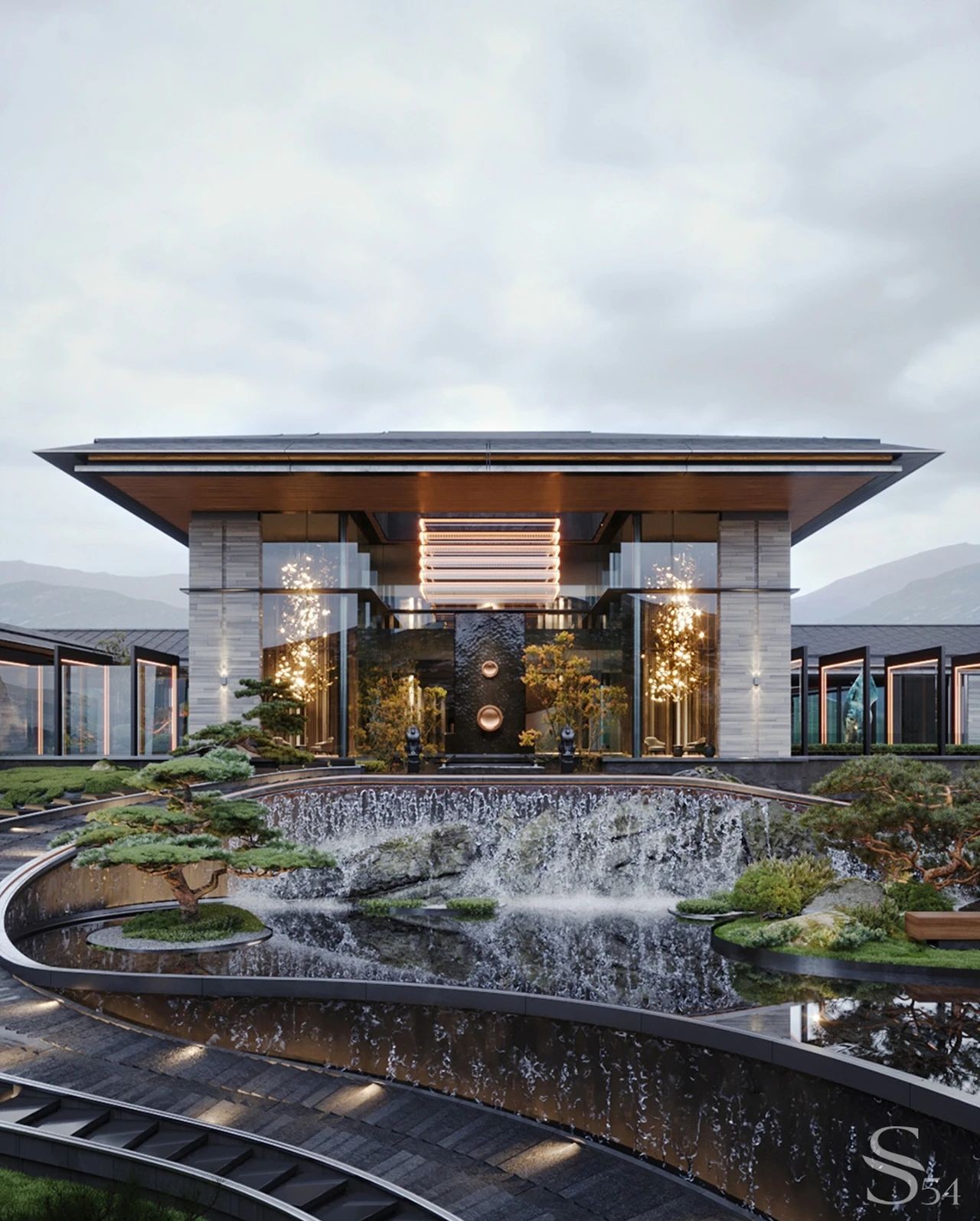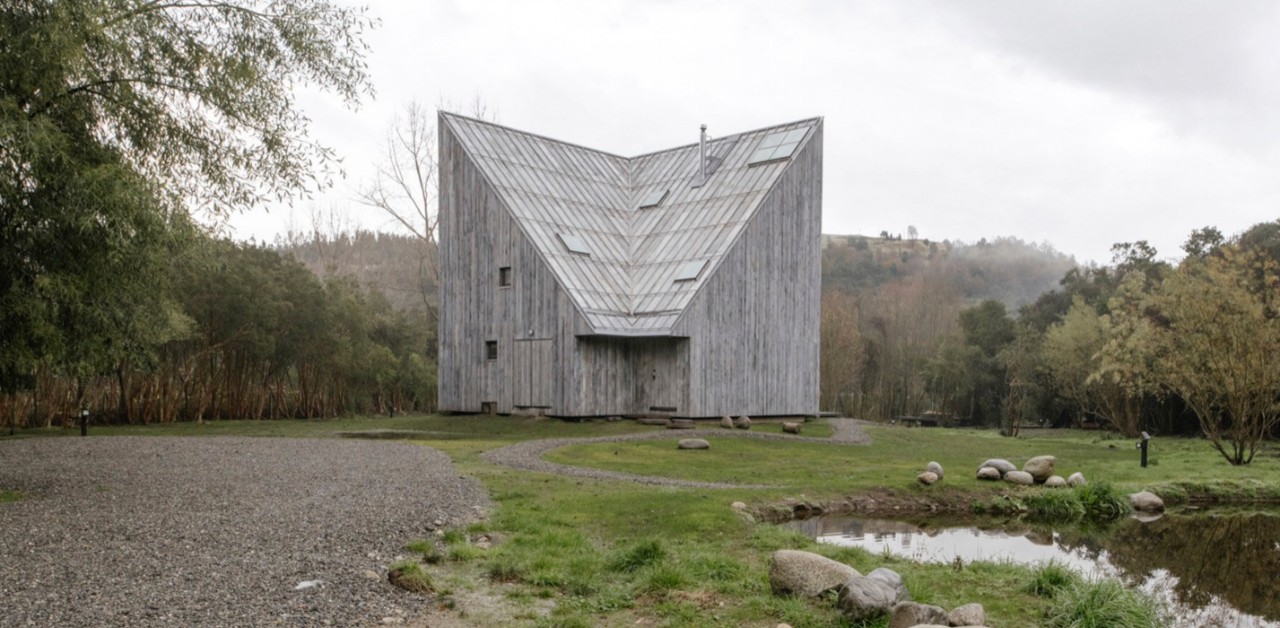Leopold Banchini Architects 丨漂浮的木结构住宅 首
2022-07-12 21:00
Leopold Banchini Architects
1788年,库克船长和他的舰队进入霍克斯伯里三角洲和避风的悉尼湾。在Dyirabun (Hawkesbury)河的入口处,他第一次受到了自时代开始就生活在这些河岸上的达鲁格人的欢迎。不久之后,英国人在这片澳大利亚领土上建立了殖民地,在这片广袤的土地上修建了一个公路和电力网络。电线杆是用当地最好的硬木做的。后来,这些柱子慢慢地被钢柱子所取代。
In 1788 Captain Cook and his fleet entered the delta of the Hawkesbury and the sheltered bay of Sydney. At the entrance of the Dyirabun (Hawkesbury) River, he was first welcomed by the Darug People who had been living on these banks since the beginning of times. Not long after, the British colonized the Australian territory, building a network of roads and electrical lines across the vast country. The electrical posts were made of some of the finest local hard woods. Later on, these posts were slowly replaced by steel posts.
马拉马拉溪(Marra Marra Creek)的小社区是在18世纪早期由定居者建立的,很可能是利用囚犯劳动来耕种土地。然而,电力网络从未到达小溪,直到今天,这个社区仍然“脱离电网”,只有在涨潮时坐船才能到达。
The small community of Marra Marra Creek was established by settlers in the early 18th century, most probably using inmate labor to cultivate the land. However, the electrical network never reached the creek and the community remained “off the grid” and only accessible by boat at high tide until today.
Marra Marra Shack的木柱是由英国人使用的200年的旧电线杆改造而成的,这给了Ironbark木材(Eucalyptus crebra)新的生命。生长在达鲁格地区的斑点树胶计时器(Corymbia maculata)被用于天花板和地板的横梁。细节和家具由松节油木材(Syncarpia glomulifera)改造而成,这些木材来自于定居者在小溪岸边建造的旧码头。
Marra Marra Shack is built using timber pillars made out of repurposed 200 years old electrical posts used by the Brits, giving a new life to the Ironbark timber (Eucalyptus crebra). Spotted Gum timer (Corymbia maculata) growing in the Darug region is used for the beams of the ceiling and floor. The details and furniture are made of repurposed Turpentine timber (Syncarpia glomulifera) from the old jetty built by the settlers on the banks of the creek.
阶梯式的纵剖面与紧密排列的结构网格相结合,确认了房屋所在的陡峭斜坡场地。住宅的内部完全集中在一个面向小溪边缘的朝北的大窗户上。窗户被分成两半,可以用砝子将窗户向上吊起,让景观进入宁静的木材内衬室内空间。两个小房间通往一处露台,这处露台免受建筑周围野生自然环境的影响。在房子的上方,平坦的屋顶在树冠上提供了一个大露台。
The stepped longitudinal section in conjunction with a tightly arranged structural grid acknowledge the steeply sloping site upon which the house is located. The interior of the dwelling is entirely focused on one single large north-facing window orientated towards the creek edge. The window is split in half and can be hoisted upwards using counter weights, allowing the landscape into the tranquil timber lined interior space. Two small rooms open to a patio protected from the wild nature surrounding the building. Above the house, the flat roof offers a large terrace in the tree canopy.
这座房子完全是用木材建造的;只有façade被防火纤维水泥薄板覆盖。基座固定在下方的砂岩基岩上,避免了沉重的混凝土基座的需要,并将施工过程中所需的行业和机械数量对现场的影响降至最低。太阳能和水都收集在屋顶上,并储存在现场,使房子完全自我可持续发展。
The house is entirely built in timber; only the façade is covered by thin fire-resistant fiber cement sheets. The footings are pinned to the underlying sandstone bedrock, avoiding the need for heavy concrete footings and reducing the impact on the site as well as the number of trades and machinery required during the construction process to a bare minimum. Both solar energy and water are collected on the roof and stored on site make the house fully self-sustainable.
图片版权 Copyright :Leopold Banchini Architects
采集分享
 举报
举报
别默默的看了,快登录帮我评论一下吧!:)
注册
登录
更多评论
相关文章
-

描边风设计中,最容易犯的8种问题分析
2018年走过了四分之一,LOGO设计趋势也清晰了LOGO设计
-

描边风设计中,最容易犯的8种问题分析
2018年走过了四分之一,LOGO设计趋势也清晰了LOGO设计
-

描边风设计中,最容易犯的8种问题分析
2018年走过了四分之一,LOGO设计趋势也清晰了LOGO设计

































































